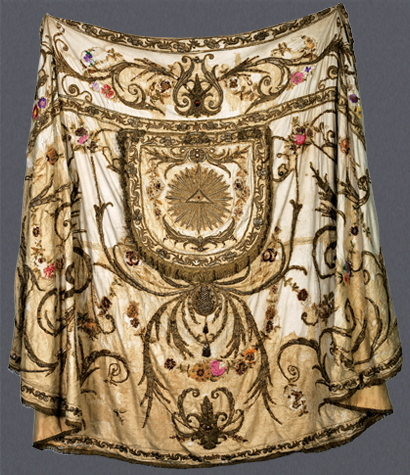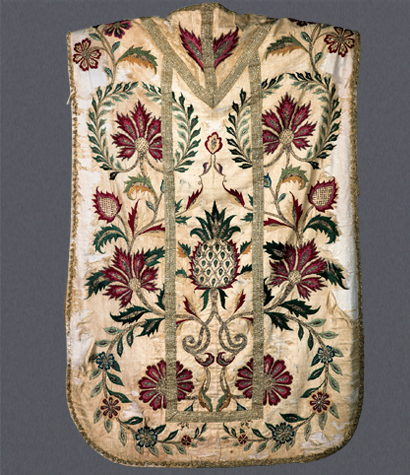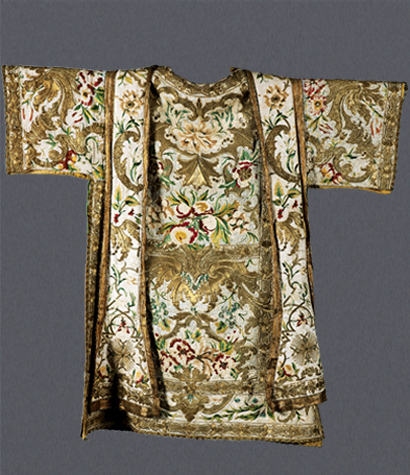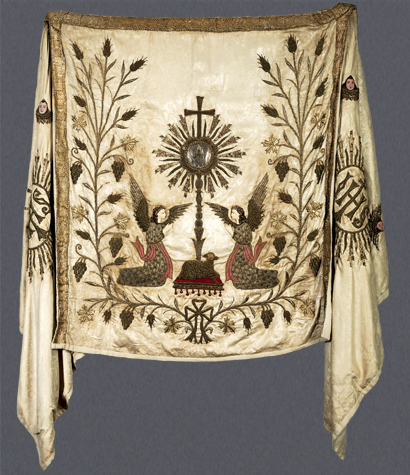
Copes are processional vestments, and not worn during Mass. Semi-circular in cut, the cope is fastened at front with a clasp or brooch. At the back is a hood, once functional, but now purely symbolic in nature. From the medieval period in Europe, copes were made of highly decorated materials or richly embroidered. This lavishly worked cope, though not in very good condition, is still a good example of the high level of skill that Indo-Portuguese embroidery art achieved.
The cope, of white silk, is decorated with elaborate and complex gold embroidery in a lively composition made up of sinuous plant-patterns and eye-catching floral motifs. The lush gold-embroidered foliage, which carries here and there traces of green leaves, has the appearance of seaweed or river reeds, recalling both the maritime-influenced Portuguese Manueline period and the Goan landscape. The plant composition is set off by vividly coloured flowers in shades of pink, lilac, purple, red, yellow and orange, with contrasting centres, and further embellished with silver, gold and multi-coloured beads and sequins. The overall design is bordered on top by two narrow gold-embroidered, sequinned bands of curving plant motifs, as also the bottom edge, which is tasselled with gold threads. The symbolic gold-embroidered hood is shaped like a shield, and finished with a fringe and tassels, again in gold thread. At its centre is a sunburst motif carrying the triangular symbol of the Holy Trinity, framed by curving plant motifs.
PUBLICATIONS
Museum of Christian Art, Convent of Santa Monica, Goa, India, Calouste Gulbenkian Foundation, Lisbon, 2011.








